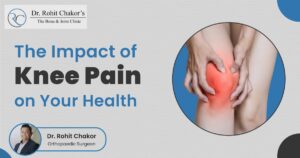Osteoporosis is a condition whereby the density of the bone decreases and the body ceases to manufacture the same quantity of bone as it did previously. Although it tends to affect both females as well as males, it is most commonly seen in women. The reason for this is the decreased production of estrogen during the menopause phase. The hormone, estrogen provides protection against osteoporosis.
When someone suffers from this condition, all their bones become weak and they become highly susceptible to fractures in the event of an accident or even a slight knock.
The word osteoporosis means porous bones. Once a person crosses the age of 35 years the rate of bone renewal or rebuilding slows down. When this happens on a prolonged basis the concerned person is highly prone to develop osteoporosis.
Key Points:
- Those who smoke and have a poor diet are more likely to suffer from osteoporosis.
- Osteoporosis targets areas of the body such as the hip, wrists and spine.
- Although there is no particular outward sign of osteoporosis you are likely to develop a stoop as a result of a weak spine. This will further lead to bone pain.
Osteomalacia:
Osteomalacia is a condition that is similar to osteoporosis where the bones are weakened. But what makes this condition different from osteoporosis is that in osteomalacia there is difficulty in the process of bone-building. In osteoporosis, existing bones become weak.
Reasons for Osteomalacia:
Osteomalacia occurs when there is vitamin D deficiency. As a nutrient, the benefits of vitamin D are enormous because it is instrumental for the absorption of calcium in the stomach.
Vitamin D is helpful for the maintenance of phosphate and calcium levels which is needed in the proper formation of bones. Vitamin D can be acquired from ultraviolet rays of the sun and also from food items such as fish and dairy products.
Signs of Osteomalacia:
Signs of osteomalacia are few. The most common signs include fracturing of the bones and weakening of the muscles. A person who suffers from the condition of osteomalacia has a difficult time walking and may develop abnormal gait.
Treatment of Both Osteoporosis and Osteomalacia:
When it comes to the treating osteoporosis it is mainly focused on preventing the onset, maintaining healthy bone density, preventing fractures and reducing pain. This treatment is done by making adjustments to your lifestyle as we daily meal plan in addition to taking medications and health supplements.
As the first line of treatment of osteomalacia, the patient will be prescribed a number of phosphate, vitamin D and calcium health supplements. Additionally, the patient will be asked to spend some time out in the sun for the absorption of sunlight.
In case you have a concern or query you can always consult an expert & get answers to your questions!





